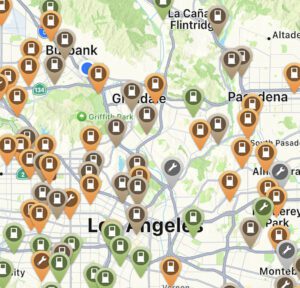As the world moves towards a greener and more sustainable future, the demand for electric vehicles (EVs) is rising. With this surge in popularity comes the need for an extensive and accessible electric charging infrastructure. Consumers will be more inclined to buy EVs when there are more accessible charging stations. Especially if they are easy to use and feature available spaces to charge. In the U.S, meeting the growing demand for electric charging stations presents key issues that require careful attention and strategic solutions. This article aims to explore three crucial challenges in this domain.
Electric Infrastructure Expansion 
One of the primary hurdles in meeting the demand for electric charging stations is significantly expanding the existing infrastructure. While major cities and urban areas have started embracing EVs and have many charging stations, rural and suburban regions lag. This discrepancy poses a challenge in providing equitable access to charging facilities for all EV owners, regardless of location. A collaborative approach between government entities, utility companies, and private stakeholders is crucial to address this issue. Governments should provide incentives and grants to encourage the establishment of charging stations in underserved areas. Utility companies can play a vital role by investing in developing charging infrastructure. They do so by leveraging their existing power grid networks, and exploring innovative charging solutions like solar-powered stations. Moreover, partnerships with private businesses and commercial property owners can help create a nationwide charging station network.
Electric Interoperability and Standardization
Another significant challenge is ensuring the interoperability and standardization of electric charging stations. Currently, charging station manufacturers use varying plug types and protocols, leading to compatibility issues. It’s frustrating to see options of charging stations then to see the plug type is not compatible. Then the EV owner has to put more effort to find the right charging station. This lack of standardization inconveniences EV owners, limiting their charging options and potentially discouraging adoption. To overcome this challenge, the industry must work towards a unified standard for charging infrastructure, such as the Combined Charging System (CCS). Widespread adoption of a single standard would simplify the charging process for EV owners and encourage investment in charging station manufacturing. Additionally, efforts are a must to ensure backward compatibility with older EV models, reducing the need for costly upgrades.
 Balancing Energy Demand and Grid Capacity
Balancing Energy Demand and Grid Capacity
As the number of EVs on the road increases, the strain on the electrical grid becomes a critical concern. Currently, the U.S. has 150,000 charging stations, most of which are not level 3 chargers. To use a level 1 or level 2 charger is an inconvenience as it requires hours to charge fully. This means the EV owner leaves there car in an area or overnight. Level 3 chargers are faster but require more electricity. Charging multiple EVs simultaneously can lead to a sudden surge in energy demand, potentially overloading the grid and causing power outages. This issue is more pronounced in densely populated areas with concentrated charging stations. To mitigate this challenge, strategies such as load balancing, time-of-use pricing, and demand response programs can be implemented. Load balancing techniques distribute the charging load across different times of the day to avoid peak demand periods. Time-of-use pricing incentivizes EV owners to charge their vehicles during off-peak hours when the grid is underutilized. Furthermore, demand response programs allow utility companies to manage the charging process dynamically, adjusting charging rates based on the grid’s capacity and availability of renewable energy sources.
Meeting the growing demand for electric charging stations in the United States requires a multi-faceted approach that addresses infrastructure expansion, interoperability, and grid capacity challenges. By fostering collaboration between government entities, utility companies, and private stakeholders, it is possible to establish an extensive and accessible charging infrastructure across the country. Moreover, embracing standardization and implementing innovative strategies to balance energy demand will ensure a seamless and sustainable transition to electric mobility. With these solutions, the United States can pave the way for a cleaner and greener transportation future.

 Balancing Energy Demand and Grid Capacity
Balancing Energy Demand and Grid Capacity